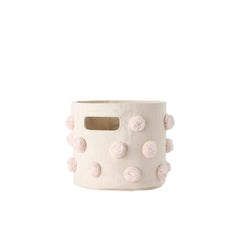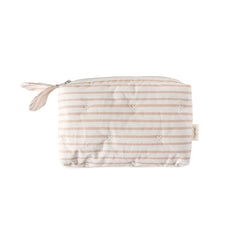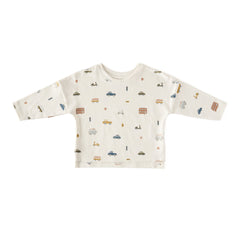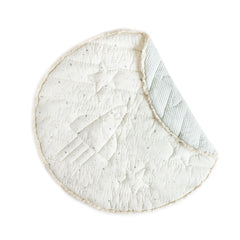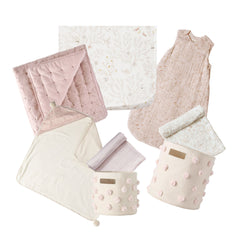There’s no shortage of transitions to navigate during the first few years of your little one’s life. Weaning your child off their binky is one of those major milestones you’ll encounter with your toddler. This big step can be overwhelming for both your little one and you, as many parents and babies become quite reliant on soothers. So, it’s not surprising that many first-time parents wonder when to stop the pacifier and how to tackle this transition without disrupting sleep routines. It’s a good idea to prepare for the change ahead of time to make things as smooth as possible for both you and your baby. The smoother the transition, the fewer tears there will be and the more sleep everyone will get. Need we say more? In this article, we’ll cover when to start weaning your child, a few helpful techniques you can try out and some of our favorite tips and tricks for challenging days.
Table of Contents

When to stop the pacifier
The good news is, if you’re wondering when to take away pacifier from your baby, you’re already on the right track because timing is everything when it comes to navigating transitions with your little one. Before you begin the weaning process, it’s helpful to understand why they might be so attached to their soother. Babies are born with a sucking reflex that allows them to eat and drink, however, it also has a soothing and calming effect. Offering a pacifier gives your little one an opportunity to self soothe and they can become very reliant on it for this reason.
If soothers are so helpful, why do we ever have to wean babies off them in the first place? There are a few very good reasons for this. Becoming overly dependent on a pacifier can negatively impact your little one’s sleep in the long run. Using a pacifier excessively beyond 4 years of age can also result in long-term issues with speech and language development as well as dental problems and abnormal jaw alignment. That’s why experts recommend weaning your child off of their soother between 2 - 4 years of age.

How to get rid of the pacifier
Now that you know when to start the process of weaning your baby off their pacifier, let’s discuss a few techniques you can use to successfully navigate this transition as well as a few of our favorite tips or tricks for when things get a little challenging.
- Be mindful of timing. The first thing you want to do is make sure you’re picking the right time to tackle this transition with your little one. Don’t try to wean your baby off their pacifier if there are any other major changes or challenges in their environment. For example, if your baby is about to start daycare, wait until they have settled into their new routine before starting to wean. The same principle goes for illnesses, moves or the arrival of a new baby.
- Plant the seed. Start talking about the change before it actually happens. Introduce the idea that getting rid of soothers is a major step towards becoming a big kid. If your baby has an older sibling, you can use them as an example. This will give your child a chance to get accustomed to the idea before they actually start the weaning process.
- Try a cold turkey approach. Some children thrive with a slow and gradual approach to change, whereas others might do better with the cold turkey approach. With this approach, you’ll take away all pacifiers at once. If you’re going to go cold turkey, be prepared to spend a little more time helping your child go down for naps and bedtime.
- Plan for a visit from the pacifier fairy. Much like the tooth fairy, the pacifier fairy is a great way to help your child get excited about an experience that might otherwise be difficult or overwhelming. When you’re ready to go cold turkey, tell your child that the pacifier fairy is coming soon. Gather all of your baby’s soothers on their nightstand and once your little one is asleep, remove the pacifiers. Replace them with a small gift and a letter, explaining they’re a big kid now and the pacifier fairy has taken their soothers to give to younger babies who need them.
- Try the slow and steady approach. If the cold turkey approach doesn’t feel like the right fit for you and your child, don’t worry! Many parents use the slow and steady approach to wean their children off of their pacifiers. Start by eliminating pacifier use in situations that are typically not triggering for your child. For example, you may want to begin by not bringing a pacifier on walks or car rides. Slowly but surely, over the course of several weeks, scale back on soother use. Typically, eliminating pacifier use during naps and at bedtime is the last thing parents tackle. Often, it’s also the most difficult, so don’t be surprised if the last step is the longest one.
- Try the gradual destruction technique. With this approach, you’ll gradually (and safely!) cut off pieces of your baby’s pacifier before offering it to them. This destroys the vacuum effect and the soother becomes less and less satisfying to your little one. So, when the time comes to get off the pacifier altogether, the transition’s less difficult.
- Introduce something new. When you take away your little one’s binky, have something else to introduce them to at bedtime. If they’re old enough, having a new pair of pajamas with a pattern they love or a cozy blanket for storytime is a great way to distract from the transition.
- Remove the temptation. If you’re trying to eat healthier, it’s easier to stick with it when you remove all the junk food from your home. The same principle applies here. When you’re weaning your baby off their pacifier, it can be hard not to give in to the tears. That’s why some parents find it helpful to take away the temptation all together by removing all soothers from the house.
- Leverage storytelling. There are many great children’s books to helpt your little one get excited about this ‘big kid’ step. It’s also comforting for them to know that lots of other children have navigated this change.
- Be patient. Every child is different, so don’t compare your timeline to anybody else’s. If you’re weaning your child off their pacifier early, the transition may be shorter and easier since your baby probably hasn’t become dependent on the pacifier. On the other hand, if you’re weaning a toddler off a pacifier, it may be a longer and more difficult process. Take it day by day and practice patience. You’ll get there.
- Introduce white noise. If your baby is young enough, the introduction of white noise during the weaning period can be a helpful soothing substitution for the pacifier.
- Ask for help. Expect that your baby might need a little more support from you during this transitional period and don’t be afraid to ask for help. You may even want to reach out to family members, babysitters or friends ahead of time to let them know that you could use some extra hands during the witching hour. Remember, when you take good care of yourself, you’re able to take better care of your baby.
- Celebrate the milestone. When your child’s officially binky-free, celebrate the occasion! Have a little party with a treat to acknowledge the milestone and hard work that both you and your little one did to get over the hump.

The first few years of your child’s life are full of transitional periods. They can sometimes be challenging, but they’re also exciting milestones worth celebrating! With a little patience and a few baby steps, you’ll have your little one sleeping soundly without their pacifier in no time.

